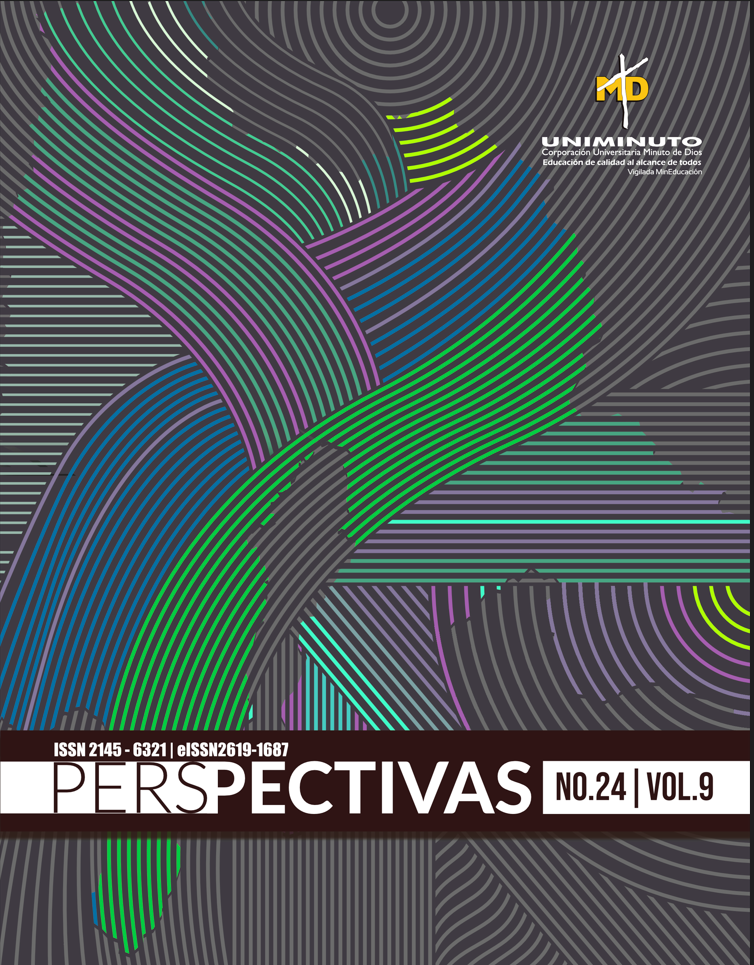Optimizando el aprendizaje de los lenguajes de programación. Un enfoque basado en la analítica de datos para los estudiantes de Ingeniería de Sistemas en la Fundación Universitaria Los Libertadores
Barra lateral del artículo
Cómo citar
Detalles del artículo

Esta obra está bajo una licencia internacional Creative Commons Atribución 4.0.
Contenido principal del artículo
Resumen
La investigación propone una metodología sólida para construir modelos predictivos de rendimiento académico en estudiantes de Ingeniería de Sistemas, basada en el análisis detallado de datos académicos, especialmente en programación y programación intermedia. Busca mejorar la analítica educativa y la predicción del rendimiento en áreas especializadas utilizando diversas métricas. Se analizan estudiantes del primer y segundo semestre de los últimos cinco años, recopilando datos meticulosamente y empleando tres técnicas de aprendizaje automático para construir modelos predictivos con una precisión cercana al 65 %.
Así, el modelo basado en Naïve Bayes se destaca por identificar estudiantes propensos a repetir y abandonar, examinando las características más relevantes para la predicción del rendimiento académico. Este enfoque no solo busca mejorar la capacidad predictiva en Ingeniería de Sistemas, sino también ser replicable en otros cursos y programas.
En consecuencia, la metodología contribuirá a mejorar los procesos de aprendizaje y a generar estrategias de intervención para estudiantes en riesgo de repitencia y deserción, alineándose con la misión de la investigación de catalizar un impacto positivo en la calidad educativa y el bienestar estudiantil, actuando como un agente de transformación interdisciplinaria.
Referencias
Adelman, C. (2006). The toolbox revisited: Paths to degree completion from high school through college. U.S. Department of Education.
Anderson, T., & Dron, J. (2011). Three generations of distance education pedagogy. The International Review of Research in Open and Distributed Learning, 12(3), 80-97. https://doi.org/10.19173/irrodl.v12i3.890
Baker, R. S. J. d., & Yacef, K. (2009). The state of educational data mining in 2009: A review and future visions. Journal of Educational Data Mining, 1(1), 3-17. https://doi.org/10.5281/zenodo.3554657
Castrillón, O. D., Sarache, W. y Ruiz-Herrera, S. (2020). Prediction of academic performance using artificial intelligence techniques. Formación Universitaria, 13(1), 93-102 (2020) http://dx.doi.org/10.4067/S0718-50062020000100093
Clow, D. (2013). An overview of learning analytics. Journal of Learning Analytics, 1(1), 4-19. https://doi.org/10.18608/jla.2014.11.3
Díaz, B., Meleán, R. y Marín, W. (2021). Rendimiento académico de estudiantes en educación superior: predicciones de factores influyentes a partir de árboles de decisión. Telos: Revista de Estudios Interdisciplinarios en Ciencias Sociales, 23(3), 616-639. https://doi.org/10.36390/telos233.08
Durairaj, M. y Vijitha, C. (2014). Educational data mining for prediction of student performance using clustering algorithms. International Journal of Computer Science and Information Technologies, 5(4), 5987-5991. https://www.semanticscholar.org/paper/Educational-Data-mining-for-Prediction-of-Student-Durairaj-Vijitha/892b0182c44c34a2ae68daec819eaec301c3bd9c
Gutiérrez, J. A., Garzón, J. y Segura, A. M. (2021). Factores asociados al rendimiento académico en estudiantes universitarios. Formación Universitaria, 14(1), 13-24. http://dx.doi.org/10.4067/S0718-50062021000100013
Han, J. (2012). Data mining: Concepts and techniques. Morgan Kaufmann Publishers.
Juárez, P., Morales, M., Sánchez, J., & López, D. (2014). Innovative approaches to software development: Challenges and practices. Springer.
Lister, R., Adams, E. S., Fitzgerald, S., Fone, W., Hamer, J., Lindholm, M., ... & Thomas, L. (2004). A multi-national study of reading and tracing skills in novice programmers. ACM SIGCSE Bulletin, 36(4), 119-150. https://doi.org/10.1145/1041624.1041673
Mueen, A., Zafar, B., y Manzoor, U. (2016). Modeling and predicting students’ academic performance using data mining techniques. International Journal of Modern Education and Computer Science (IJMECS), 8(11), 36-42. https://doi.org/10.5815/ijmecs.2016.11.05
Peña, A. (2014). Métodos y técnicas de análisis de datos en la investigación científica. Síntesis.
Romero, C. y Ventura, S. (2010). Educational data mining: A review of the state of the art. IEEE Transactions on Systems, Man, and Cybernetics, Part C (Applications and Reviews), 40(6), 601-618. https://doi.org/10.1109/TSMCC.2010.2053532
Salal, Y., Ullah, S., Khan, M. A., & Shah, M. A. (2019). Analyzing the impact of feature selection on classification techniques: A case study of email spam filtering. Journal of King Saud University - Computer and Information Sciences, 31(4), 412-423. https://doi.org/10.1016/j.jksuci.2018.03.011
Sebesta, R. W. (2015). Concepts of Programming Languages (11th ed.). Pearson.
Siemens, G., & Long, P. (2011). Penetrating the fog: Analytics in learning and education. EDUCAUSE Review, 46(5), 30-32.
Sommerville, I. (2011). Software engineering (9th ed.). Addison-Wesley.
Torres, P. C. y Cobo, J. K. (2017). Tecnología educativa y su papel en el logro de los fines de la educación. Educere, 21(68), 31-40.
Wang, Q., & Woo, H. L. (2007). Systematic planning for ICT integration in topic learning. Educational Technology & Society, 10(1), 148-156.
Witten, I. H. Frank, E. y Hall, M. A. (2005). Data mining: Practical machine learning tools and techniques. Morgan Kaufmann.

